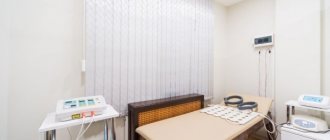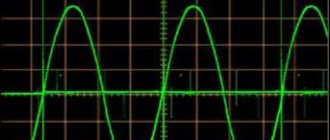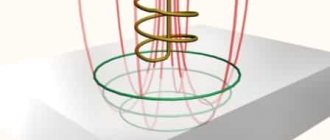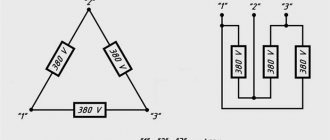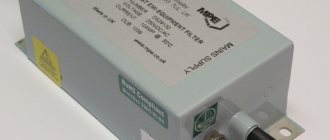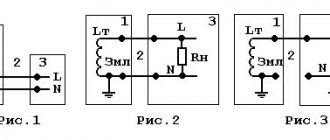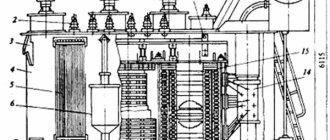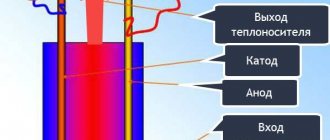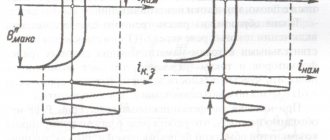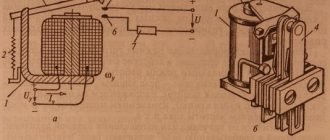Electrotherapy is the use of the properties of electric current for therapeutic purposes; it occupies a separate large section in physiotherapy. Modern methods of physiotherapy use electric current to combat various pathologies: injuries of the musculoskeletal system, diseases of the nervous system, during recovery in the postoperative period.
This article will discuss the various uses of electrotherapy in medicine, and also describe the main mechanism of its action on the human body.
Pulse polarity
Impulses are mono- and bipolar. Monopolar impulses cause the dissociation of substances into ions , and are also capable of propelling electrically charged particles deep into tissues. Thus, monopolar pulsed current can also be used for iontophoresis. The substances used are the same as in iontophoresis with galvanic current.
Bipolar impulses cause oscillatory movements of charged particles on biological membranes. Symmetrical bipolar impulses compensate for electrolysis, and there is no skin irritation under the electrodes. Bipolar impulses overcome skin resistance better and feel more comfortable.
Electrotherapy – treatment of diseases with electric current or magnetic fields
Treatment with electric current (electrotherapy), magnetic or electromagnetic fields is one of the areas of physiotherapy, the healing properties of which are based on the effect of controlled charged particles on the body. It has been known for quite some time that t
The physical ability of positive particles to move towards the negative pole and vice versa ensures accelerated circulation of blood flow and lymph, and, consequently, improvement of the entire body.
Long before the study of the influence of electric fields on the human body and the invention of power sources, ancient Greek healers used electric rays or acne to treat nervous diseases or paresis.
Franklinization (on behalf of the American scientist B. Franklin) is considered the first method of physiotherapy using a constant electric field.
It made it possible to improve blood circulation, lower blood pressure, accelerate wound healing, relieve pain, and significantly reduce the occurrence of allergic reactions.
Modern technology allows the use of constant or alternating pulse currents, different frequencies, different magnetic fields and their combination for treatment:
- Diseases of the central nervous system (paresis and paralysis, decreased sensitivity of the limbs, slowed passage of nerve impulses, treatment of intercostal neuralgia, neuroses, etc.).
- Treatment of diseases of the musculoskeletal system (traumatic injuries of the spine, soft tissues and/or their consequences, treatment of postural disorders, spinal curvatures, treatment of intervertebral hernias, protrusions, osteochondrosis, osteoporosis, arthritis, etc.).
- Diseases and pathologies of the cardiovascular system (thrombosis, rheumatoid arthritis, vegetative-vascular dystonia, coronary artery disease, hypertension, angina pectoris, atherosclerosis, etc.).
- treatment of headaches (migraines, tension pain, cluster and other chronic pain syndromes of the head).
- Diseases of internal organs (liver, kidneys, gastrointestinal tract, genitourinary system).
- For the fusion of epithelial tissues, treatment of skin rashes, ulcers, trophic ulcers, etc.
- In cosmetology for skin rejuvenation and removal of puffiness.
Types of physiotherapy using electricity
The most common types of physiotherapy are:
- Galvanization - direct currents of low voltage and low strength. Depending on the area of application (different parts of the body), the procedure time and dosage (tension) may vary. Activates blood flow in the extremities, restores damaged nerve fibers and soft tissues. It has an anti-inflammatory effect, relieves pain, relaxes, and relieves muscle spasms. Can be used to treat inflammatory processes of the gastrointestinal tract, hypertension, hypotension, vegetative-vascular pathologies, hearing and vision diseases. Widely used to treat diseases of the spine, spinal cord and joints.
- Electrophoresis is low-frequency electrical discharges that enhance the penetration of medications through the skin to the internal organs. The double therapeutic effect is achieved by activating blood circulation and deep absorption of drugs.
- Darsonvalization is the use of alternating pulse currents of high, ultrasonic and supersonic frequencies. It is used to relieve pain syndromes and relieve spasm of smooth muscles, increases the elasticity of the walls of blood vessels (varicose veins, trophic ulcers, long-lasting wounds), recommended for insomnia, treatment of migraines, skin rashes, frostbite, neuroses, hypertension. Widely used in cosmetology as a local procedure for tightening and rejuvenating the skin, relieving swelling and congestion.
- Electrosleep is the effect of electrical impulses on various areas of the brain. It has a calming, sedative, trophic, anticonvulsant effect. Can be used for insomnia, neurasthenia, mental attacks, ischemic attacks, asthmatic attacks.
- Diadynamic therapy is pulsed exposure to direct currents of a constant frequency (50 Hz and 100 Hz) alternating periods. Causes a sensation of tingling, slight burning, warmth or vibration. It is used to treat injuries and bruises of the limbs and spine, arthritis, treatment of osteoporosis, thrombophlebitis and other diseases.
- Diathermy is the use of high frequency, low voltage, high power currents. There is a feeling of strong heating of the skin, then deep heating of the internal tissues. Improves blood circulation, enhances metabolic processes, increases the body's immune resistance. Indicated for chronic inflammatory processes, pain syndromes (tonsillitis, rhinitis, etc.).
- Amplipulse therapy is the use of modulated sinusoidal currents for the treatment of asthma and bronchitis, inflammation of the gastrointestinal system, pelvic organs, ligaments and joints.
- Inductothermy is the use of a high-frequency magnetic field with induced eddy currents. A more uniform distribution of currents promotes uniform heating of internal organs, better tolerance by the patient and has a more lasting therapeutic effect.
Electrotherapy devices
Modern medical technicians and specialized companies offer a huge selection of devices of various sizes, characteristics and parameters for use both in medical institutions and at home.
For electrophoresis and galvanization in physical rooms and at home, the following devices can be used: “Potok 1”, “ESMA 12.19 Lotus” or “ESMA 12.21U Galant”. "Aesculapius 2", "BTL 4000", "BTL 4000 Plus" allows you to generate pulses of various frequencies with a wide range.
A much more expensive and functional device with a wide selection of programs, including electrosleep - “Radius - 01FT”.
A wide range of physiotherapy, magnetic and electrotherapy for the treatment of diseases of the nervous system, diseases of the spine, curvature of posture, joints, internal and ENT organs, is offered at Dr. Bobyr’s clinic in Moscow or Zelenograd.
Contraindications for electrotherapy
Despite the positive impact and effectiveness of electrical procedures for improving the health of the human body, their use must be monitored by experienced doctors and used with great caution. Electro- and magnetic therapy is strictly contraindicated for pregnant women and patients:
- with tumor formations of various etiologies;
- those who have had a stroke or heart attack or suffer from heart defects;
- with high temperature or fever;
- having purulent inflammation of internal organs and tissues;
- with acute bleeding and poor blood clotting;
- with tuberculosis or other viral and infectious diseases;
- with epilepsy or prone to convulsive conditions;
- with chronic liver and kidney diseases;
- those suffering from Parkinson's disease or multiple sclerosis;
- with individual intolerance to electric current or medications used for electrical procedures.
Pulse frequency
Most often, low pulse frequencies are used in physiotherapy: from single to 1000 Hz (pulses per second). Such a low frequency range used in physiotherapeutic cosmetology is determined by the electrophysiological lability of skeletal muscle fibers. To stimulate skeletal, smooth muscles and nerve conductors, different impulse frequencies are needed. When choosing the pulse current frequency, experimentally determined values can serve as a guide.
- To achieve the effect of activating blood circulation, the optimal frequency is about 10 Hz, corresponding to the rhythm of tremor, which affects the increase in capillary blood flow.
- The tonic effect is best manifested at frequencies of 50-100 Hz. (myostimulation).
- Pain relief and muscle relaxation are carried out at frequencies of 100-150 Hz. (neurostimulation).
- The effect on the projection of parenchymal organs is at high frequencies up to 1000 Hz.
The ability to change the pulse frequency significantly expands the scope of application of the device. And the “frequency drift” function offers frequencies for all excitable cells in one “packet” of pulses.
Pulse current
Pulse current is an electric current that is periodically repeated in short-term portions (pulses). In medicine, pulsed current
, consisting of rhythmically repeating current pulses of constant direction and various shapes - rectangular, trapezoidal, triangular, exponential (Lapik currents) or sinusoidal current pulses.
The main characteristics of a pulse current are: amplitude a, duration t and period T, or repetition frequency, as well as pulse shape. Acting on a normal motor nerve or muscle, a single impulse,
even with a short duration and intensity, causes a rapid and short-term
contraction
of the muscle.
With partially impaired innervation, impulses even tens of times longer in duration and several times more intense cause only sluggish contraction
.
In such cases, pulses with gradually increasing intensity (exponential) are used. Frequent impulses - more than 20 per 1 second - cause tetanic muscle contraction. These features of the reactions of the neuromuscular system to the action of pulsed current formed the basis of electrodiagnostics and electrical stimulation. Electrical stimulation is carried out to maintain muscle nutrition and function during the period of recovery of a damaged nerve or temporary forced inactivity of the muscle. For electrical stimulation, choose a type of pulsed current that would cause tetanic contraction with minimal current strength and the least painful stimulation. Previously, to induce tetanic contractions, so-called faradization was used, using the current of a Faraday induction coil. With the advent of electronic devices, the faradic current was replaced by a similar action and easily measured “tetanizing” current. When treating with this current, contractions must alternate with pauses. The UEI-1 device is intended for various types of electrodiagnostics and electrical stimulation. The devices “Amplipulse-3” (tube) and “Amplipulse-ZT” (transistor) generate alternating currents with a frequency of 5000 Hz, modulated according to a sinusoidal law in a series of oscillations of low (from 10 to 150 Hz) frequency. Sinusoidal modulated currents are used in the treatment of radiculitis, vegetative-trophic disorders, neuralgia, neuritis, plexitis, neuromyositis, obliterating endarteritis, consequences of traumatic injuries, sinusitis, subacute and chronic inflammatory diseases of the female genital organs. Diadynamic currents (Bernard currents) are half-sinusoidal pulses of constant polarity with a frequency of 50 and 100 Hz. These frequencies are used separately or in continuous alternation in “short” or “long” periods. The indications for the use of diadynamic current are the same as for sinusoidal modulated current, however, the irritation of receptors and skin caused by diadynamic current, the painful burning sensation and tingling sensation under the electrodes limit its use (contraindicated in disorders of the autonomic nervous system). The sources of these currents are the SNIM-1 device, as well as the model 717 device intended for bedside assistance. Pulsed current
with rectangular pulses at a frequency of 100-200 Hz and a ratio of pulse duration to pause of 1: 10 (Leduc currents) have an analgesic effect and are capable of inducing electronarcosis.
Pulsed
current with rectangular pulses is also used in electrosleep therapy. See also Electrotherapy.
Current strength (amplitude)
Current strength is measured in Amperes (A). In cosmetology, fractions of an ampere are used.
- 1 mA (milliamp) – 1/1000 A,
- 1 µA (microampere) – 1/1000000 A.
The amplitude of the effect (current strength) is adjusted on each channel separately within a given range. The maximum current strength for the face and for the body should be different.
- From 0 to 100-120 mA – for myostimulation and lymphatic drainage of the body.
- From 0 to 10 mA – for facial myostimulation.
For comparison, the current strength for microcurrent therapy: from 0 to 600. The current strength during the facial or body myostimulation procedure is set manually, focusing on the patient’s sensations.
Electrosleep. Therapeutic effect, indications and contraindications
Electrosleep - a method of influencing the central nervous system with a pulsed current of low frequency and low strength - was proposed in 1948 by Liventsov, Gilyarovsky, Kirillova and Segal.
In the electrosleep procedure, the sleep itself is not important, but it is important to achieve normalization of the processes of excitation and inhibition, improving the influence of the brain on all processes in the body.
Devices: Elektroson-2, Elektroson-3, Elektroson-4 T, Elektroson ES-10-5, etc.
To obtain a weak rhythmic stimulus that causes inhibition in the cerebral cortex, turning into drowsiness and sleep, the authors of the method used pulsed direct current with rectangular pulses, low frequency, low strength, constant polarity. Pulse duration 0.2-2 milliseconds (ms). Pulse frequency 1-130 Hertz (Hz).
The first electrode (bifurcated) is applied to the skin of the eyelids of closed eyes, and the second, also bifurcated, is applied to the skin in the area of the mastoid processes behind the ears. The orbital electrode is connected to the cathode, and the occipital electrode to the anode.
Pulse frequency from 1 to 130 Hz (low frequencies), current strength is individual: until vibration appears in the eyelid area (but not more than 0.5 mA). Pulse duration 0.2-0.5 ms. Exposure: first procedure - 10 minutes, subsequent ones - up to 60 minutes. The course of treatment is 15-20 times, daily or every other day.
Mechanism of action of electrosleep
associated with the reflex action of alternating current through the skin receptors of the eyelids on the cerebral cortex.
Electrosleep promotes:
normalization of higher nervous activity, increasing the threshold of pain sensitivity, improving brain function, improves vascular reactivity, blood supply to the brain, and helps restore the functional state of the brain. With electrosleep, blood saturation with O2 improves to 98%, the functioning of the blood coagulation and anticoagulation systems with oxygen is normalized, breathing and blood pressure are normalized.
Indications:
neuroses, neurasthenia, schizophrenia, long-term consequences of brain injury, cerebral vascular sclerosis (initial period),
hypertension
stage I - II, hypotension, gastric and duodenal ulcers, bronchial asthma, eczema, dermatoses, neurodermatitis,
phantom pain
, obliterative vascular diseases of the extremities, toxicosis of pregnancy, rheumatic chorea, rheumatoid arthritis, periodontal disease.
Contraindications:
individual intolerance to current, inflammatory eye diseases, weeping dermatitis of the face, hysteria, severe circulatory disorders, arachnoiditis, myopia.
Types of rehabilitation: physiotherapy, physical therapy, massage: textbook. allowance / T.Yu. Bykovskaya [and others]; under general ed. B.V. Kabarukhina. - Rostov n/d: Phoenix, 2010. - 557, [1] p.: ill. - (Medicine). pp. 47-48.
Contraindications and effects
It is important to remember that there are certain contraindications for the use of physiotherapy methods using pulsed currents:
- Tumors of various etiologies;
- Individual intolerance to exposure;
- Pregnancy (second trimester);
- Hemarthrosis in the acute stage;
- Kidney and cholelithiasis;
- Spastic state of muscles;
- Dislocations, bone fractures;
- Bleeding.
Current pulses have an exciting, stimulating and irritating effect on the human body. Passing through the tissues of the body, the current causes increased functions of cell membranes and tissue tension. Cells are activated, their vital activity improves, the functioning of joints, blood vessels and nerve fibers is restored. This helps speed up the treatment of many diseases, as well as avoid all sorts of complications.
In general, as a result of exposure to pulsed currents, the following occurs:
- Reducing congestion in the pelvis;
- Metabolism improves, the body's defenses increase;
- The synthesis of organ secretion is activated;
- The permeability of cell membranes increases.
Physiotherapeutic procedures using pulsed current activate blood flow, so the drugs used penetrate the tissues faster, and the effectiveness of treatment increases.
Effect of physiotherapy
Physiotherapeutic procedures have a normalizing effect on metabolism, redox processes, regulation of internal organs, lymph and blood circulation. In addition, they mobilize the body's defenses.
Physiotherapy is part of the comprehensive treatment of diseases. As a rule, its methods are used at the stage of remission, but can also be used in the acute stage. The main advantage of this direction is the absence of exposure to drugs and chemicals. Thus, the high effectiveness of physiotherapy is combined with the safety of its use.
Advantages of AC
The issue of increasing and decreasing alternating voltage at the current level of technical development is much easier to solve than direct electric current.
Such transformations are quite easily carried out using a relatively simple device - a transformer. The transformer has a high efficiency, which reaches 99%. This means that no more than one percent of the power is lost when the voltage increases or decreases. In addition, the transformer allows you to decouple high voltage from lower voltage, which is a very powerful argument for most electrical installations.
The use of a three-phase AC system can further improve the efficiency of the power supply system. To transmit electricity of the same power, fewer wires will be required than with single-phase alternating current. In addition, a three-phase transformer is smaller in size than a single-phase transformer of equal power.
AC electric machines, in particular squirrel-cage asynchronous motors, have a much simpler design than DC motors. The main advantage of three-phase asynchronous motors is the absence of a commutator-brush assembly. This reduces the cost of manufacturing and operating such electrical machines. In addition, due to the absence of a commutator-brush assembly, asynchronous motors have many times more power compared to DC motors.
